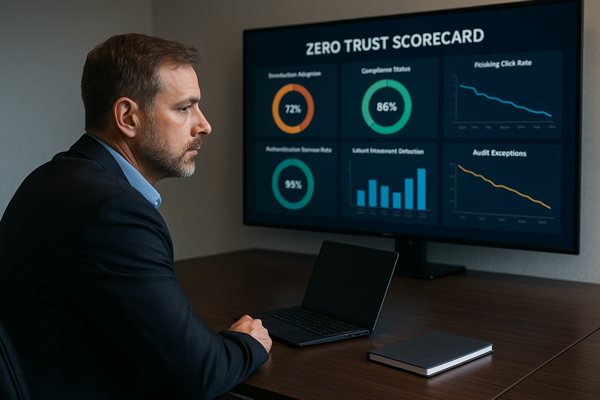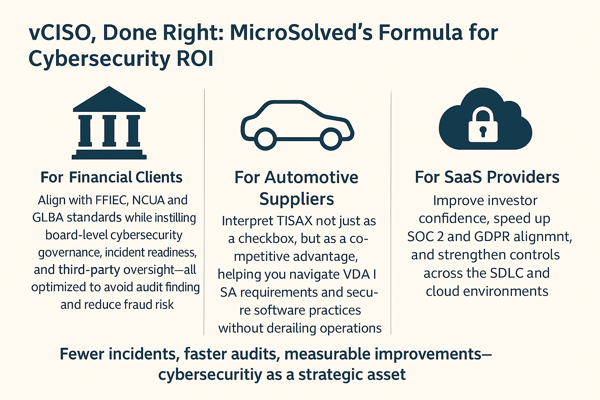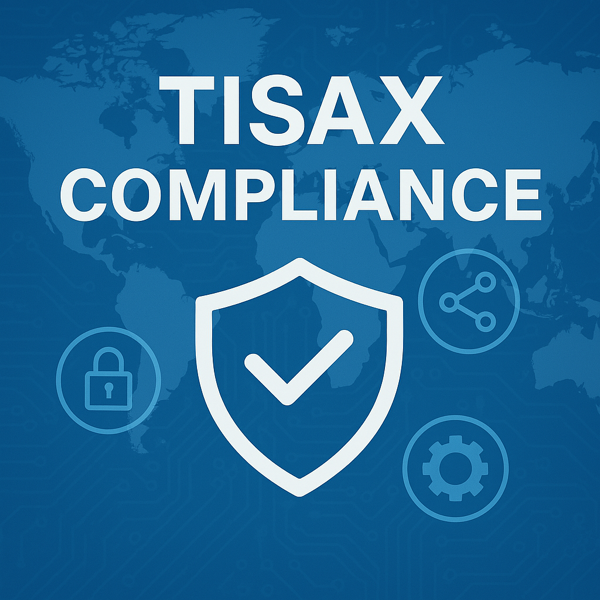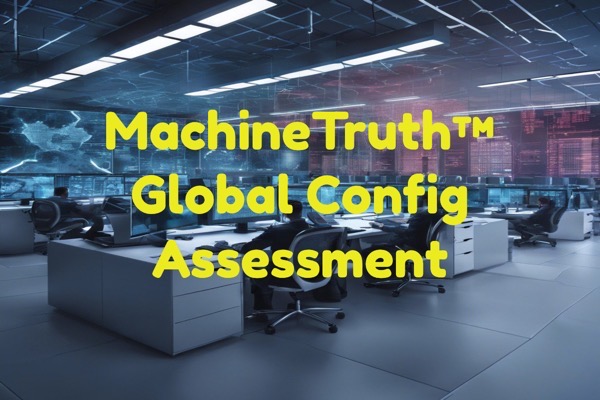The stakes of compliance and risk management have reached unprecedented heights. Organizations are not just dealing with regulations; they are fighting to protect their reputation, assets, and, most importantly, their people. Among the most effective yet often overlooked methods to ensure preparedness against these threats are tabletop tests.

Tabletop tests serve as a simulation platform where teams can walk through potential incidents in a structured format, offering a deep dive into the intricacies of business continuity plans (BCPs), disaster recovery plans (DRPs), and incident response plans (IRPs). With regulatory requirements from authorities like FFIEC, FDIC, and NCUA, alongside industry standards such as SOC2, PCI-DSS, and GDPR, regular tabletop exercises are not just beneficial—they’re essential to maintaining compliance and ensuring operational resilience.
This article delves into the paramount importance of conducting frequent tabletop tests, exploring their role in risk management, effective execution strategies, and the myriad benefits they bring. Join us as we uncover how these exercises can transform organizational preparedness and compliance in an ever-evolving threat landscape.
Understanding Tabletop Tests
Organizations must prioritize their readiness for unforeseen disruptions. The growing complexity of cyber threats, coupled with natural disasters and other disruptive incidents, necessitates a proactive approach to safeguarding critical systems and maintaining business operations. Tabletop tests, often referred to as tabletop exercises, are a cornerstone of this preparedness framework. They serve as simulations that allow organizations to evaluate their incident response plans, disaster recovery strategies, and business continuity measures.
What are tabletop tests?
Tabletop tests are structured, discussion-based sessions designed to evaluate an organization’s readiness to handle various disaster scenarios, such as cybersecurity incidents, natural disasters, or even a full-scale ransomware attack. These exercises gather the incident response team, senior management, and other relevant stakeholders around a table—hence the name “tabletop”—to walk through a hypothetical crisis scenario.
The primary objective of these exercises is to challenge an organization’s response strategies, identifying gaps and areas for improvement without the risk of actual operational disruption. They are the bedrock for refining and validating incident response plans, disaster recovery plans, and business continuity plans, promoting organizational resilience when facing emergencies.
Purpose of tabletop exercises
The ultimate goal of a tabletop exercise is to enhance an organization’s crisis management capabilities. Here’s why they are crucial:
- Testing Incident Response Plans: Tabletop exercises help assess the effectiveness of existing incident response plans, ensuring that all team members understand their roles and responsibilities in the event of a crisis. By simulating incidents such as phishing attacks or penetration testing outcomes, teams can practice their responses in a controlled environment.
- Improving Communication and Coordination: During an actual disaster, communication is critical. Tabletop tests help streamline information flow between departments, ensuring that everyone—from frontline responders to senior management—collaborates effectively to return to normal operations.
- Identifying Weaknesses: These exercises expose gaps in strategies and procedures, allowing organizations to address vulnerabilities before they result in severe financial impact. Whether it’s reallocating resources, updating contact information for law enforcement partners, or refining ground rules for decision-making, these discoveries are invaluable for maintaining business operations during actual disruptions.
- Fostering a Proactive Approach: By routinely engaging in tabletop exercises, organizations maintain awareness of emerging cyber threats, regulatory requirements, and industry standards. This proactive stance is crucial for sustaining business continuity and ensuring compliance with frameworks such as SOC2, PCI-DSS, and GDPR.
- Ensuring Compliance with Regulatory Requirements: Regulatory bodies like the FFIEC, FDIC, and NCUA emphasize the significance of incident response robustness and disaster recovery planning. Tabletop exercises ensure that organizations meet these stringent requirements, safeguarding not only their operations but also consumer trust.
In summary, tabletop tests are an essential component of business continuity planning. They allow organizations to stress-test their preparedness in a risk-free environment, ensuring they are well-equipped to manage crises effectively. By facilitating organizational resilience through regular practice, these exercises empower businesses to navigate disruptions with confidence and agility.
The Role of Tabletop Tests in Risk Management
Unanticipated disruptions can have drastic effects on organizational resilience and the financial health of a business. Whether due to natural disasters, a cybersecurity incident or a ransomware attack, organizations must have robust strategies to ensure continuity and timely recovery of critical systems. Enter tabletop exercises—an invaluable tool in risk management that tests business continuity plans (BCPs), disaster recovery plans (DRPs), and incident response plans (IRPs). Tabletop exercises simulate disaster scenarios in a controlled environment, allowing businesses to proactively analyze and refine their preparedness plans.
Tabletop exercises are more than a mock crisis management drill; they are a proactive approach that tinkers with the systems in place, revealing potential gaps and areas of improvement. These exercises are aligned with regulatory requirements from entities like FFIEC, FDIC, NCUA, SOC2, PCI-DSS, and GDPR, which underscore the necessity for organizations to uphold high standards of preparedness and recovery. By regularly conducting these exercises, organizations can fortify their defenses against cyber threats, maintain normal operations during crises, and minimize business impact.
Assessing Business Continuity Plans (BCPs)
Business continuity planning is crucial for maintaining the smooth operation of essential business functions despite interruptions. Tabletop exercises are particularly effective in evaluating BCPs by simulating various disaster scenarios and assessing how efficiently an organization can sustain critical business operations. During these exercises, the response from senior management is observed to ensure that there is a structured decision-making process that aligns with legal and industry standards.
The FFIEC, a key regulatory body for financial institutions, emphasizes that BCPs must be not only comprehensive but also reflective of a business impact analysis that prioritizes critical functions. Similarly, the FDIC and NCUA advocate that a bank’s or credit union’s BCP should safeguard assets, fulfill fiduciary responsibilities, and serve customer needs without disruption. Organizations under SOC2 and PCI-DSS regulations must demonstrate how their BCPs protect data integrity and ensure service delivery.
Table of requirements for BCP assessment:
|
Regulatory Body
|
Requirement Focus
|
|
FFIEC
|
Business impact analysis, decision-making process
|
|
FDIC
|
Asset protection, customer service continuity
|
|
NCUA
|
Fiduciary responsibility, operational resilience
|
|
SOC2
|
Data integrity, service delivery assurance
|
|
PCI-DSS
|
Data protection, transaction security
|
Evaluating Disaster Recovery Plans (DRPs)
Disaster Recovery Plans are essential for the swift recovery and restoration of IT systems following a disruption. Tabletop exercises play a pivotal role in scrutinizing DRPs by testing the organization’s ability to restore normal operations, align with disaster recovery planning standards, and minimize financial impact.
Exercises simulate various disaster scenarios, from cyber incidents to physical disturbances, to ensure that the DRPs incorporate comprehensive IT and facility recovery procedures. According to FFIEC guidelines, DRPs should integrate well-documented recovery timelines and procedures that align with technological and operational capacities.
SOC2 compliance requires that DRPs cover aspects of organizational resilience by ensuring data backup and recovery strategies are robust and efficient without compromising on data security. For PCI-DSS, DRPs should address the restoration of sensitive financial data processing systems, ensuring ongoing transaction security following a disruption.
Checklist for DRP evaluation in tabletop exercises:
- Documented Recovery Timelines: Ensure prompt resolution and restoration.
- IT Systems and Facility Recovery: Revise strategies for infrastructure and service recovery.
- Data Backup and Recovery: Validate SOC2 compliance with robust data protection measures.
- Sensitive Information Protection: Address PCI-DSS requirements for secure data handling.
Testing Incident Response Plans (IRPs)
An Incident Response Plan (IRP) is a structured approach to handling and managing fallout from security incidents, including cyber threats like a phishing attack. Tabletop exercises assess the effectiveness of IRPs by simulating cyber breach scenarios, allowing organizations to evaluate their readiness, exposure, and response efficacy.
IRPs should detail roles, responsibilities, ground rules, and protocols for incident response teams to quickly and effectively manage incidents. This aligns with PCI-DSS and GDPR requirements mandating strict adherence to data protection policies and the safeguarding of user privacy throughout incident management processes.
Evaluating IRPs involves a careful review of the communication strategies in place, collaboration with law enforcement, and documentation of incident responses. It also underscores the importance of regular penetration testing to preempt potential vulnerabilities. Through these exercises, organizations can fine-tune their incident response actions, ultimately minimizing downstream impact and ensuring a return to normal operations.
Essential components to test in IRP tabletop exercises:
- Team Roles and Responsibilities: Clearly defined tasks for each incident response team member.
- Communication Protocols: Efficient internal and external crisis communication.
- Collaboration with Law Enforcement: Procedures for reporting and cooperating with authorities.
- Documentation and Learning: Maintaining detailed incident logs for post-incident analysis.
In conclusion, tabletop exercises are not merely a regulatory checkbox. They are a passionate commitment to organizational excellence and resilience. By integrating lessons from these exercises into continuous improvement cycles, businesses can craft rigorous preparedness frameworks that stand firm against the tests of time.
Key Components of Effective Tabletop Exercises
Organizations must be prepared to face various challenges that could disrupt their operations. Tabletop exercises are essential in strengthening incident response plans, disaster recovery, and business continuity strategies. These exercises simulate natural disasters, cyber threats, and other critical incidents to test and enhance the readiness of an organization’s response mechanisms. A well-conducted tabletop exercise can mean the difference between swift recovery and prolonged disruption. Here, we explore the key components that make these exercises effective, ensuring your business remains resilient in the face of adversity.
Scenario Development
The heart of any tabletop exercise lies in its scenario development. Scenarios must be meticulously crafted to reflect realistic disaster scenarios, such as a ransomware attack or a phishing incident, which could impact an organization’s critical systems. Scenarios should be aligned with real-world threats pertinent to the industry and organizational risk profiles. Industry standards like FFIEC (Federal Financial Institutions Examination Council) and SOC2 (Service Organization Control 2) emphasize the importance of considering cybersecurity incidents that can have significant financial impacts.
It’s crucial to vary the complexity and nature of these scenarios. By incorporating both cyber threats, such as a denial-of-service attack, and physical threats, like a natural disaster, organizations can evaluate their strategies comprehensively. Scenarios should be constructed to stress-test incident response plans and business continuity strategies, ensuring that they uphold regulatory requirements, such as PCI-DSS (Payment Card Industry Data Security Standard) and GDPR (General Data Protection Regulation). For example, a scenario involving data breaches should consider GDPR requirements concerning data protection and breach notifications.
Additionally, each scenario should have clearly defined objectives encompassing business impact analysis and crisis management. These objectives can help guide the team to focus on key aspects that must be addressed during the exercise, pushing them to think critically and develop proactive approaches to mitigate risks.
Role Assignment
An effective tabletop exercise requires that roles and responsibilities are clearly defined beforehand. Senior management and key stakeholders should be involved to provide leadership and decision-making during the exercises. Assigning roles ensures participants understand their responsibilities during an incident, which mirrors real-world operations, enhancing organizational resilience and streamlining effective responses during actual events.
For instance, the incident response team should be competent to lead efforts in identifying threats, communicating with law enforcement if necessary, and ensuring the return to normal operations. Meanwhile, the business continuity team focuses on maintaining business operations and minimizing disruptions.
Roles can include:
- Incident Commander: Oversees the entire exercise and ensures alignment with crisis management protocols.
- Communication Lead: Manages internal and external communication, ensuring transparency and accurate information dissemination.
- Operations Lead: Focuses on maintaining business continuity and engaging disaster recovery planning.
- Financial Analyst: Assesses the financial impact of scenarios and strategizes recovery solutions.
By structuring role assignments with these considerations, organizations can more effectively orchestrate responses in real time, boosting the agility and efficiency of their crisis management initiatives.
Documented Facilitation
Effective tabletop exercises necessitate documented facilitation to ensure structured and seamless execution. Comprehensive documentation serves as a reference point, guiding participants through ground rules, exercises, and post-exercise reviews. It captures key insights and lessons learned, becoming invaluable for refining disaster recovery plans and improving organizational preparedness.
Facilitators should use documentation to track:
- Exercise Goals and Objectives: A summary of what the exercise aims to achieve, aligning with regulatory compliance such as NCUA (National Credit Union Administration) directives.
- Ground Rules: Clear guidelines to ensure all participants understand the scope and limitations of the exercise.
- Action Items and Feedback: During and after the exercise, documenting observed strengths and weaknesses aids in refining strategies for future incident response tabletop exercises.
- Evaluation Metrics: Key performance indicators (KPIs) assessing the effectiveness of business continuity planning and incident response.
A critical part of facilitation is ensuring that documentation is disseminated post-exercise with actionable insights and recommendations. This not only helps maintain a proactive approach but also supports continuous improvement and aligns future exercises with evolving regulatory requirements and business needs.
In conclusion, incorporating these key components into your tabletop exercises fosters a culture of preparedness, ensuring that your organization remains resilient amidst the uncertainties that may lie ahead. By mastering scenario development, role assignment, and documented facilitation, businesses are better positioned to protect their operations, employees, and customers, effectively navigating the challenges of today’s complex landscape.
Benefits of Regular Tabletop Testing
Organizations must be prepared to respond swiftly and effectively to disruptions. Regulatory requirements and industry standards have increasingly emphasized the importance of robust incident response, disaster recovery, and business continuity plans. Regular tabletop testing emerges as a pivotal practice in ensuring these plans are not only compliant but also effective in real-world scenarios. By simulating disaster scenarios, such as natural disasters or ransomware attacks, organizations can better understand their vulnerabilities and readiness to maintain business operations. Let’s explore the multifaceted benefits of this critical tool in fostering organizational resilience.
Enhancing Team Coordination
Effective incident response relies heavily on seamless team coordination. A well-coordinated team can significantly mitigate the financial impact of a crisis and ensure that normal operations are restored quickly. Tabletop exercises serve as a rehearsal space where an organization’s incident response team can practice real-time collaboration under simulated pressure scenarios.
By navigating through cyber threats and disaster scenarios, teams gain insights into the roles and responsibilities of every member, fostering a deeper understanding of the collective response strategy. Improved coordination during these exercises translates into a more synchronized effort during actual events, enhancing operational efficiency and minimizing downtime. The ability to swiftly mobilize expertise and resources is pivotal in mitigating risks and ensuring organizational resilience.
Improving Decision-Making Skills
Decision-making in crisis situations requires a proactive approach and sharp, clear thinking. Tabletop exercises are instrumental in honing these skills among senior management and incident response teams. Through discussion-based simulations, participants engage in solving complex problems, making critical decisions in a controlled environment.
These exercises compel participants to weigh the pros and cons of different strategies, understand the potential financial impact, and consider the implications of their choices on critical systems and business operations. By repeatedly working through potential disaster recovery plans and cybersecurity incidents, teams can refine their decision-making process, leading to faster and more effective responses in real crises. Improved decision-making capabilities ensure that when the threat is real, actions taken are well-calibrated and aligned with the organization’s business continuity planning.
Identifying Gaps in Preparedness Strategies
One of the key benefits of regular tabletop testing is the identification of gaps in preparedness strategies. Through structured tabletop exercises, organizations can simulate various disaster scenarios, such as a cyber attack or a natural disaster, to assess the effectiveness of their incident response plans and disaster recovery planning.
This practice allows organizations to uncover weaknesses in their current strategies, such as overlooked dependencies, missing resources, or gaps in communication protocols. Identifying these gaps is essential for fine-tuning preparedness strategies and ensuring compliance with regulatory requirements, including FFIEC, FDIC, NCUA, SOC2, PCI-DSS, and GDPR mandates.
By proactively addressing these vulnerabilities, organizations can enhance their business continuity plans, ensuring they remain robust, adaptable, and responsive to a wide array of potential crises. Continuous improvement of these plans fortifies the organization’s capacity to maintain critical business operations, even in the face of unprecedented challenges.
Compliance with Regulatory Requirements
Organizations face increasing pressure to prepare for and respond to incidents that can disrupt normal operations. Whether dealing with cybersecurity incidents like ransomware attacks or natural disasters, businesses must implement robust tabletop exercises and disaster recovery plans to ensure resilience. These practices not only mitigate the financial impact of disruptions but are also mandated by various regulatory requirements that govern business continuity and incident response.
Meeting Industry Standards
Organizations across various sectors must comply with specific industry standards that dictate how they should approach business continuity planning and incident response. Here, we delve into the critical regulatory requirements that shape these practices:
- FFIEC (Federal Financial Institutions Examination Council): Established to ensure the safety and soundness of financial institutions, the FFIEC mandates that these entities undertake rigorous business impact analysis and incident response tabletop exercises. This promotes a proactive approach to identifying potential cyber threats and disaster scenarios, thereby strengthening organizational resilience.
- FDIC (Federal Deposit Insurance Corporation): The FDIC requires institutions to have comprehensive disaster recovery plans and incident response plans in place. These plans must be regularly tested to ensure they remain effective in the event of a crisis, thereby safeguarding critical systems integral to business operations.
- NCUA (National Credit Union Administration): Credit unions must uphold stringent business continuity planning. NCUA guidelines emphasize the importance of incident response teams and tabletop exercises to prepare for events like a phishing attack or other cyber incidents, ensuring quick recovery and minimal disruption.
- SOC2 (System and Organization Controls 2): A key standard for service organizations, SOC2 focuses on controls related to data security and privacy. Compliance ensures that robust measures for crisis management and disaster recovery planning are in place, protecting both business and customer information.
- PCI-DSS (Payment Card Industry Data Security Standard): This standard is crucial for entities handling credit card information. Among its requirements are stringent incident response plans that protect against unauthorized access and ensure business continuity even during cyber threats.
- GDPR (General Data Protection Regulation): Applicable to organizations dealing with EU citizens’ data, GDPR necessitates vigilant data protection strategies. It demands adherence to industry standards for incident response planning, ensuring a swift and effective reaction to data breaches or any unauthorized use of personal data.
Streamlining Audits
To ensure compliance with these myriad regulations, businesses must streamline their audit processes, making them both efficient and exhaustive. A robust audit involves several steps:
- Comprehensive Documentation: Maintain detailed records of all incident response and disaster recovery practices. Documentation should include business continuity plans, specifics of tabletop exercises undertaken, results of penetration testing, and notes on any infrastructure upgrades made to fortify critical systems.
- Regular Review and Updates: Periodically review all plans and procedures to ensure they align with the latest regulatory requirements. This proactive approach helps identify gaps in existing strategies, allowing for timely adjustments.
- Engagement of Senior Management: Senior management must play an active role in audits. Their involvement underscores the importance of these processes to the wider organization, promoting a culture of vigilance and readiness.
- Utilization of Technology: Leverage advanced audit tools that facilitate data collection, trend analysis, and reporting. Such technologies enhance the accuracy and efficiency of audits, ensuring quicker identification of vulnerabilities and compliance issues.
- Partnership with Experts: Engage with external consultants or cybersecurity experts, especially during complex audits. Informing them with the ground rules and expectations leads to a more precise evaluation of the business’s readiness to handle a crisis.
By adherence to these regulatory requirements and employing strategic auditing processes, organizations not only comply with the law but also fortify their resilience against disruptions. This ensures uninterrupted business operations, safeguarding not only the financial bottom line but also the trust and loyalty of their clients and stakeholders.
Cultivating a Culture of Continuous Improvement
Fostering a culture of continuous improvement is paramount. Companies must remain agile, adapting to ever-changing environments, unforeseen challenges, and regulatory requirements. This culture is not merely a strategy but a core philosophy that ensures a business remains robust, innovative, and competitive over time.
To cultivate this culture, businesses must integrate continuous feedback loops, encourage innovation at all levels, and constantly seek ways to optimize processes. This involves empowering teams to think creatively and providing them with the necessary tools and training to identify and implement efficient and effective improvements.
Fostering Employee Engagement
Employee engagement is the heartbeat of a thriving organization. Engaged employees are more likely to bring forth innovative ideas and improvements, as they feel integrated and valued within the company. It’s crucial for businesses to implement strategies that foster this engagement actively.
- Transparent Communication: Open and honest communication helps build trust and gives employees the context for understanding how their roles contribute to the organization’s success.
- Recognition and Reward Systems: Acknowledging and rewarding employee contributions boosts morale and motivation, reinforcing the continuous improvement culture.
- Opportunities for Development: Providing training and development programs enhances skills, enabling employees to grow and adapt, which feeds back into organizational improvement.
- Collaborative Work Environment: Create spaces, both physical and digital, where employees can collaborate, share ideas, and innovate without fear of critique.
- Feedback Mechanisms: Establishing regular feedback avenues, such as surveys and focus groups, ensures that employees can voice concerns and suggestions, driving organizational change from within.
Enhancing Organizational Resilience
Organizational resilience is the ability of a company to withstand adversity, general disruptions, and adapt to changing conditions while maintaining continuous operation. This resilience is often tested during incidents like cyber threats, natural disasters, and financial crises.
- Business Impact Analysis: Conduct regular analyses to understand which business functions are critical and the impact if they’re disrupted. This helps prioritize efforts and resources.
- Comprehensive Crisis Management Plans: Develop and maintain robust crisis management plans that are regularly updated and tested through tabletop exercises and simulations—mimicking scenarios such as ransomware attacks or phishing attempts.
- Regulatory Compliance: Ensure alignment with regulatory bodies such as the FFIEC, FDIC, NCUA, SOC2, PCI-DSS, and GDPR. Compliance not only aids in preparing for incidents but also enhances trust with clients and stakeholders.
- Proactive Approach: Stay ahead of potential issues by conducting regular penetration testing and risk assessments to identify vulnerabilities in critical systems.
- Strengthen Cybersecurity Measures: Implement industry-standard security protocols and continuously update technology to mitigate emerging cyber threats.
- Leadership and Training: Senior management must champion resilience-building efforts, ensuring all employees have clarity on their roles during a crisis, supported with regular training sessions.
In conclusion, fostering a culture of continuous improvement requires dedication to engaging employees and enhancing organizational resilience. By prioritizing these areas, businesses can ensure they are well-equipped to handle adversity, harness opportunity, and ensure long-term success. Businesses that champion these ideals not only survive but thrive amid challenges, setting themselves apart in their respective industries.
More Information
MicroSolved has been a trailblazer in information security and risk management for over 30 years. Our unique, proprietary tabletop methodologies and tools are designed to handle event management with precision and effectiveness. Our approach ensures that organizations are prepared for any cybersecurity incident, natural disaster, or business continuity challenge.
We pride ourselves on delivering high-quality reports that provide actionable insights, fostering organizational resilience and a proactive approach to crisis management. Our techniques not only help in planning and executing incident response tabletop exercises but also enhance the preparedness of incident response teams. These tools have been refined over decades, ensuring they meet and exceed industry standards for crisis scenarios, such as phishing attacks or ransomware threats.
For personalized guidance or to organize a tailored tabletop exercise, reach out to MicroSolved at info@microsolved.com or call us at +1.614.351.1237. Our expertise will help ensure your business operations can swiftly return to normal after any disturbance. Let us be your partners in fortifying critical systems against cyber threats.
* AI tools were used as a research assistant for this content.


 Unlike one-size-fits-all models, our vCISO engagements begin with immersive understanding: of your business model, sector-specific compliance demands (think NCUA/FFIEC for credit unions, TISAX for auto suppliers, GDPR/SOC2 for SaaS), and your organizational risk appetite. From there, we build a living security program that’s actionable, measurable, and defensible under scrutiny.
Unlike one-size-fits-all models, our vCISO engagements begin with immersive understanding: of your business model, sector-specific compliance demands (think NCUA/FFIEC for credit unions, TISAX for auto suppliers, GDPR/SOC2 for SaaS), and your organizational risk appetite. From there, we build a living security program that’s actionable, measurable, and defensible under scrutiny.

 Enter the vCISO (virtual Chief Information Security Officer) service from MicroSolved—a game-changer for PE and VC firms looking to secure their portfolios without the overhead of a full-time hire. With vCISO services, firms gain access to seasoned security professionals who provide expert leadership, tailor-made strategies, and proactive risk management to meet the unique needs of portfolio companies.
Enter the vCISO (virtual Chief Information Security Officer) service from MicroSolved—a game-changer for PE and VC firms looking to secure their portfolios without the overhead of a full-time hire. With vCISO services, firms gain access to seasoned security professionals who provide expert leadership, tailor-made strategies, and proactive risk management to meet the unique needs of portfolio companies.

